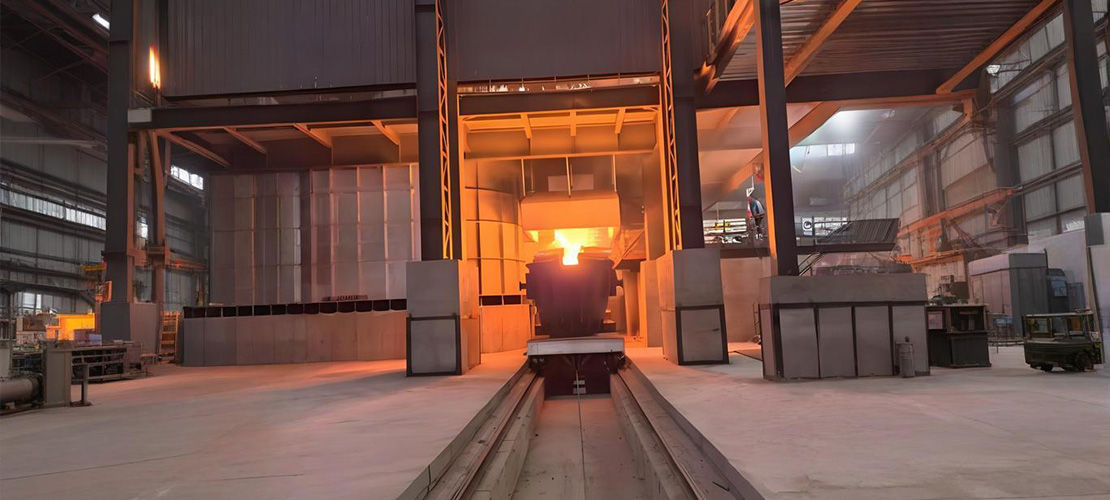Feb. 25, 2025

There are various methods for producing ferroalloys, mainly including blast furnace smelting, which uses coke as a reducing agent; electric submerged arc furnace methods, such as electric carbon thermal method and electric silicon thermal method, which use electric energy for heating and reduction; and special processes such as off-furnace method, vacuum solid-state resistance furnace method, oxygen converter method and induction furnace remelting method. Each method is flexibly selected according to the characteristics of raw materials and product requirements.
The principle of blast furnace smelting ferroalloys is similar to that of ironmaking, involving the charging of ore, flux and coke. Coke burns in the tuyere area of the furnace, not only as a heat source, but also as a reducing agent through its gasification product CO. This method is suitable for producing ferroalloys with higher grades, especially for oxides with poor stability. However, for oxides with strong stability, the blast furnace method can only produce low-grade ferroalloys. In addition, blast furnace ferroalloys usually have a high carbon content, which is the result of carburizing reaction.
The advantages of blast furnace smelting method are high labor productivity, low cost and low power consumption. At present, the ferroalloy varieties produced by blast furnaces include low-silicon ferrosilicon, blast furnace ferromanganese, low-silicon manganese alloy, nickel iron and manganese-rich slag. In my country, blast furnace ferromanganese production accounts for about a quarter of the total ferromanganese production. However, when blast furnaces are used to smelt manganese ore and silica ore, the coke ratio is higher than that of ironmaking, which affects the charge load and furnace state. At the same time, the high MnO content in the primary slag also aggravates the lining erosion, so the blast furnace design needs to be specifically adjusted.
Electric carbon thermal method is the main method for ferroalloy production, accounting for about 70% of the output. The characteristics of this method include: using a submerged arc furnace as a production equipment, and burying the arc in the charge to ensure sufficient heat for the reduction reaction; carbon is both a reducing agent and a conductive component, requiring high chemical activity, high purity and appropriate specific resistance; the charge particle size and thermal stability must be appropriate to ensure permeability; the production process is continuous, and the melting, charging and furnace discharge speeds need to be coordinated; according to the charge composition and product requirements, slag or slag-free smelting can be selected; electrode performance is crucial.
The electric silicon thermal method uses the characteristics of silicide being more stable than carbide, and uses silicon-containing alloys as reducing agents to obtain refined ferroalloys with low carbon content. This method uses an electric arc furnace, graphite electrodes to prevent carbon addition, and a magnesium lining. The production method is intermittent, and iron retention is used to protect the lining. Silicon reduces oxides and releases a lot of heat, requiring the lining to have high refractoriness and slag erosion resistance.
The out-of-furnace method does not require additional heat energy, and commonly uses metal reducing agents such as silicon, ferrosilicon, and aluminum. The production cost is high, and the charge needs to be dried, crushed, and mixed. In order to control the reaction rate and slag-metal separation, flux and ignition agent need to be added. This method is intermittent production.
The vacuum solid-state resistance furnace method uses vacuum to promote gas-solid phase reaction. The reactants need to be mixed, and it is intermittent production. This method is suitable for reactions that produce gas products.
The oxygen converter method is similar to converter steelmaking and is a refining method for ferroalloys. By controlling the amount of oxygen blown and the temperature, harmful impurities are removed, the carbon content is reduced, and the required elements are retained. This method has high production efficiency and does not require additional heat sources. It is an intermittent production method.
The induction furnace remelting method is a remelting method suitable for the production of ferrochrome nitride. Nitriding reaction is carried out by blowing nitrogen into the molten pool. This method is also an intermittent production method.
In addition, in order to utilize the heat of the liquid alloy, hot charging, hot exchange and out-of-furnace refining methods are also used in the refining of ferroalloys to save electricity and reduce costs. These methods are based on the above basic methods and are combined through reasonable scheduling.
Latest News
Latest Products
Customized metallurgical machinery and equipment range: Electric Arc Furnace, Submerged Arc Furnace, LF Refining Furnace, Vacuum Furnace, Induction Furnace, Dust Remove System, Water Treatment Equipment, etc. Providing the most advanced equipment integration services, metallurgical equipment can be customized according to different needs of customers, and production capacity can be adjusted according to customer requirements.
Electric Arc Furnace
Submerged Arc Furnace
LF Refining Furnace
VD / VOD Vacuum Refining Furnace
Induction Furnace
Furnace Accessories
Navigation
E-mail: anna@srfurnace.com
Tel: +86 159 2955 5868
WhatsApp: +86 159 2955 5868
Add:
Room 102, Building 7A, Free Trade Xintiandi, Fengdong Avenue, Fengdong New Town, Xi'an City, Shaanxi Province
